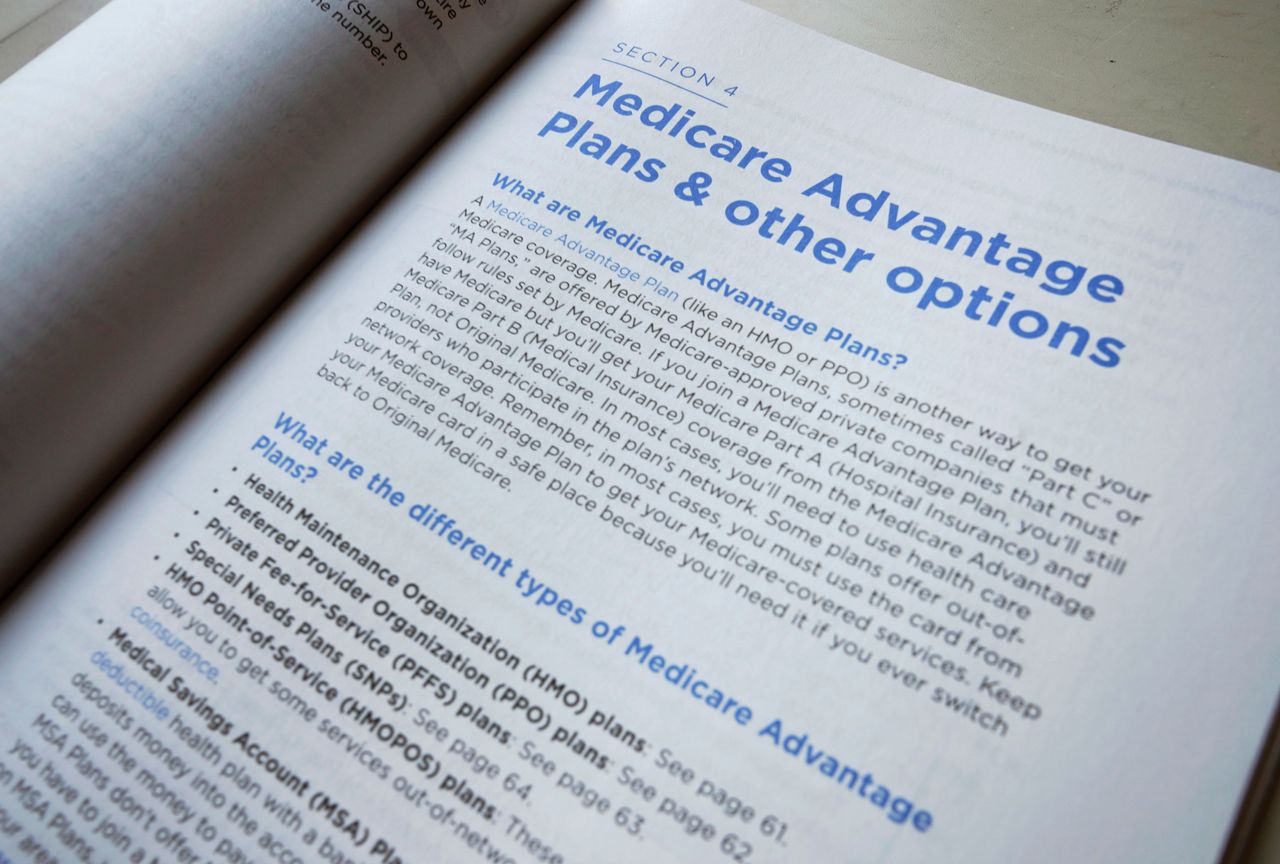| |  | | | | |  | By Megan R. Wilson | - Medicare Advantage’s big moment: As open enrollment begins, insurers are warning of trimmed plan offerings and rising costs.
- Kennedy’s cuts collide with his agenda: Recent HHS layoffs hit programs tied to ethics vetting, mental health and biosecurity — all areas RFK Jr. cares about.
- Alzheimer’s diagnostic: Roche hopes its FDA-cleared blood test for Alzheimer’s marks a turning point for early detection.
Hello all, and welcome to Health Brief. I’m Megan Wilson, your health policy host. Please send any tips, documents or intel to megan.wilson@washpost.com or message me on Signal at megan.434. This newsletter is published by WP Intelligence, The Washington Post’s subscription service for professionals that provides business, policy and thought leaders with actionable insights. WP Intelligence operates independently from the Washington Post newsroom. Learn more about WP Intelligence. |  | | Open enrollment for Medicare opens Oct. 15 and runs through Dec. 7. (Pablo Martinez Monsivais/AP) | | | |  | The Lead Brief | Medicare’s open enrollment period begins tomorrow. For older Americans enrolled in Medicare, it marks the opportunity to make changes to their health coverage, including enrolling in privately run Medicare Advantage plans. For insurers, the next eight weeks will be a test of how well they’ve adapted to a changing regulatory and competitive landscape. Policymakers and regulators have put the industry under a microscope, focused on practices meant to reduce costs, such as prior authorization, and the costs to the federal government. → Open enrollment runs from Oct. 15 through Dec. 7, allowing people enrolled in Medicare to make changes to their coverage that goes into effect at the beginning of next year. Here are a couple items to watch: — WILL ENROLLMENT IN MEDICARE ADVANTAGE PLANS DIP? The number of Americans enrolled in privately run Medicare Advantage plans has been steadily growing to more than 34 million people — roughly half of all Medicare enrollment. This year, the industry has scaled back its coverage options — both for health plans and stand-alone prescription drug plans — citing regulatory burdens and cost pressures. Insurers have projected that enrollment in Medicare Advantage plans will dip below 50 percent for the first time in since 2022, but CMS said it anticipates that enrollment will be “more robust than the plans’ projections and that enrollment will be stable.” — HOW WILL WASHINGTON REACT? Better Medicare Alliance, an industry group that advocates on behalf of plans, put out a memo to policymakers on Tuesday warning about a decrease in plan availability and increase in out of pocket maximums. “After years of cuts and layered regulatory mandates, plans are running out of tools to shield beneficiaries from higher costs and reduced choice,” the group wrote. Mehmet Oz, who leads the Centers for Medicare and Medicaid Services, has been a vocal supporter of Medicare Advantage plans. He’s appearing at the Better Medicare Alliance’s leadership and policy forum in Washington tomorrow. Last week, Oz told a crowd at an Aspen Institute event that he’s talked with insurers about voluntary reforms, but didn’t rule out revisiting tougher approaches to auditing Medicare Advantage plans. → What’s catching the feds’ attention: An independent government congressional agency known as MedPAC estimated that the federal government will pay private Medicare Advantage plans 20 percent more for services than it would if patients were enrolled in traditional Medicare — to the tune of $84 billion. MedPAC says some of this is due to a practice known as upcoding — where insurers use higher-cost or additional diagnosis codes to garner more lucrative payments. Some bipartisan lawmakers have introduced legislation to rein in the practice, and the industry is spending big cash to push back against the effort. | | | |  | Executive Health Brief | In a case of extreme whiplash, we’re learning more about the sprawling federal layoffs of health agency workers: While hundreds of layoff notices have been reversed, my colleagues Lena H. Sun and Paige Winfield Cunningham in the Washington Post newsroom uncovered dozens of previously unreported cuts. The newly reported layoffs hit individuals within the Administration for Strategic Preparedness and Response, some of whom hold top-secret clearance to work with intelligence agencies on biodefense issues such as pandemics and weaponized pathogens. An HHS spokesperson has said the administration is closing “wasteful and duplicative entities." The agency has also said anyone who had received a reduction-in-force notice had been “designated non-essential by their respective divisions.” But there are questions about whether some of the widespread cuts are misaligned with Health and Human Services Secretary Robert F. Kennedy Jr.’s strategic health policy goals, including the ASPR cuts. Before his government post, Kennedy talked about concerns about bioweapons spreading in the U.S. Other cuts, such as employees at the Centers for Disease Control and Prevention that vet agency officials and advisory panel members for conflicts of interests, come as Kennedy has complained that the agency was mired with workers entangled with industry conflicts that negatively impacted policy. Kennedy has also talked about the desire to move away from medication treatment for depression. But more than 100 employees at the Substance Abuse and Mental Health Services Administration are believed to have been fired — including those in charge of grant programs for states, my colleagues reported. The agency gives billions of dollars to states, localities and organizations for programs to foster community mental health services, substance abuse prevention and support for those in recovery — which all seem to align with the “Make America Healthy Again” agenda. “No grants are affected by the RIF,” Andrew Nixon, a spokesperson for HHS told me in an email when asked whether there were concerns about all of the layoffs listed above. → Check out Lena and Paige’s reporting for the updates, including the positions that were restored. | | | |  | Industry Rx | The Food and Drug Administration has granted clearance to a blood test from pharma giant Roche to help rule out Alzheimer’s disease in the early phases. It’s part of the new era of testing and treatment for the disease, which has no cure. The test, developed in collaboration with Eli Lilly, measures levels of a type of protein, known as p-tau181, in a person’s blood. That protein is one of two key biomarkers linked to Alzheimer’s pathology, along with p-tau217. Roche said the test should be used in primary care to determine whether patients should see a neurologist. “Blood tests are likely to enable an earlier and more accurate diagnosis of Alzheimer’s disease for many patients, which is especially important now that treatments for early Alzheimer’s are available,” said Suzanne Schindler, a clinical neurologist and neuroscientist who specializes in studying diagnosis and treatment of Alzheimer disease. In a release, Roche said Elecsys could rule out Alzheimer's pathology with a 97.9 percent negative predictive value, or the probability a person doesn’t have the disease. “A negative test will tell physicians to look for other causes of cognitive concerns and may affect further testing and referrals,” she said. “In some cases, ruling out Alzheimer’s disease will mean that a patient doesn’t need to see a memory specialist, which is helpful because it often takes 6 to 12 months to get an initial appointment with a memory specialist.” Why it matters: The move comes as Alzheimer’s diagnostics enter a new era, with blood-based tests gaining traction among industry alongside the rollout of drugs that target amyloid plaques, a substance in the brain often associated with the disease. - There are more than 7 million Americans living with Alzheimer’s disease. Roughly 9 in 10 people with mild cognitive impairment go undiagnosed, meaning they don’t get the chance to explore treatments.
- Testing for Alzheimer's previously relied on expensive scans that expose people to radiation or an invasive spinal tap procedure that involves puncturing the patient’s lumbar.
- Other companies are rushing to develop similar tests, including one from Fujirebio Diagnostics that was green-lit by the FDA back in May, which measures p-tau217 levels in a person’s blood.
- The FDA has approved three anti-amyloid drugs in recent years, including one from Eli Lilly called Kisunla, that have shown to modestly slow the disease’s progression.
Roche is also developing a separate test that measures p-tau217, which medical experts tell me has generally been a better predictor of the disease in patients. “This stepwise approach — launching [the] p-tau181 [test] first, followed by [a] p-tau217 [test] — reflects Roche’s goal of creating an integrated, accessible Alzheimer’s diagnostic ecosystem,” said Laura Parnas, the director of medical and scientific affairs at Roche Diagnostics, told me in an email. “Together, these assays will help ensure that patients receive the right test at the right time, from early evaluation in primary care to more definitive assessment in specialty care.” | | | | | | | | | | |